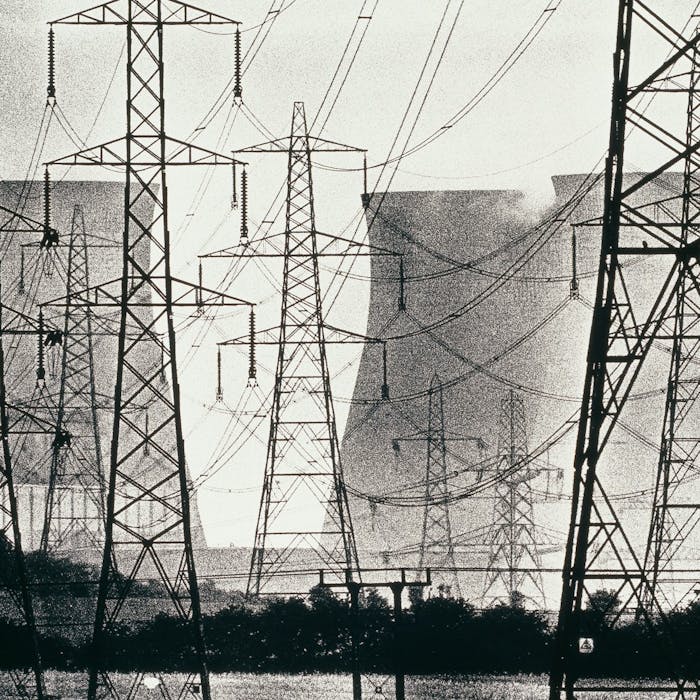
The electricity pylon
Electricity pylons (or towers) have been part of the British landscape for almost 100 years, but are often taken for granted despite being an important part of the nation's energy system and an iconic design achievement. The number of pylons in the UK is over 90,000.
Pylons are used to support electrical cables that transmit high-voltage electricity from where it’s generated, such as a power station or wind farm, through the energy system to our homes and businesses.
Electricity comes out of a power station at a low voltage, around 10-30 kilovolts. It then passes through a ‘step-up’ transformer at a transmission substation to create high-voltage electricity – up to 400,000 volts – which travels around National Grid’s electricity network. Increasing the voltage allows for greater efficiency with less energy loss. ‘Terminal’ towers are located at each end of the route, while tension or angle towers enable the route to be realigned if necessary.
Insulators made of porcelain or toughened glass support the overhead high-voltage cables and keep them away from the unearthed towers.
The voltage of the electricity in the transmission cables (lines) is too high for use in everyday appliances, so a ‘step-down’ transformer in a substation is used to lower the voltage and bring it down to a useable level.
The word pylon comes from the Greek word pyle for ‘gateway’.
In Ancient Egypt, pylons were the impressive obelisk-shaped towers on either side of the doors to temples. Egyptology was all the rage in the Twenties, after the discovery of Tutankhamun’s tomb and the boy king mummy in 1922. And this was the decade when the first steel pylons were erected and they eventually became the gateways to electricity for everyone.
The first electricity pylon in the UK was built at Bonnyfield, near Falkirk in Scotland, in 1928. But the Central Electricity Board’s new transmission grid didn’t begin operating until 1933, when it was run as a series of regional grids. The grid became a truly national system in 1938, a whole 10 years after that first pylon was erected.
The design for pylons was the winning entry in a competition run by the Central Electricity Board in 1927. Leading architect Sir Reginald Blomfield often gets the credit for the ‘lattice’ design, which was intended to be more delicate than the brutalist structures used in Europe and the United States. But the winning design, which still strides across our landscape today, was submitted to the competition by the Milliken Brothers, an engineering company based in the US, and chosen by Blomfield, designer of London’s Lambeth Bridge.
Writers Rudyard Kipling, author of The Jungle Book, and John Maynard Keynes wrote to The Times complaining of ‘the permanent disfigurement’ of our landscape. But a group of poets led by Stephen Spender were so inspired by the metal pylon march they called themselves The Pylon Poets.
The basic latticed A-frame structure has remained the same for over 100 years, with adjustments for higher voltages requiring longer insulator strings and landscape requirements like lower heights near airfields or huge towers to cross rivers.
T-pylons, the first new design for UK pylons in over 100 years, are under construction now. This new shorter, sleeker pylon design was chosen from 250 entries in an international competition organised by National Grid, the UK Government and the Royal Institute of British Architects in 2011. The winning T-shaped pylon comes from Danish firm Bystrup.
Further reading
Links to external websites are not maintained by Bite Sized Britain. They are provided to give users access to additional information. Bite Sized Britain is not responsible for the content of these external websites.
